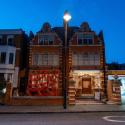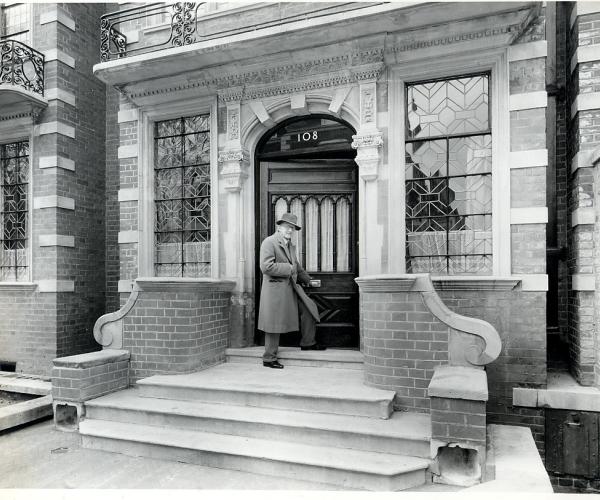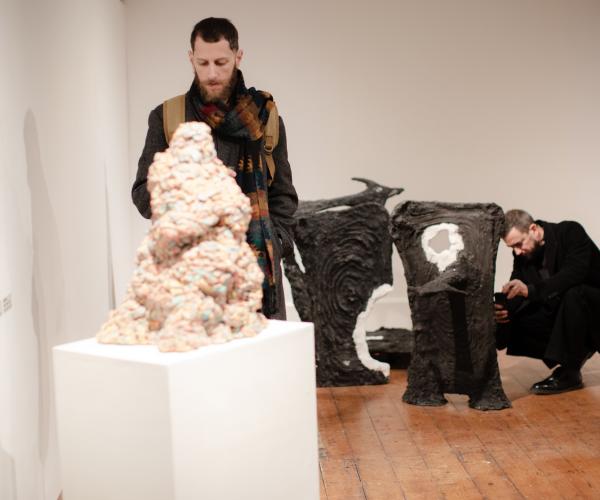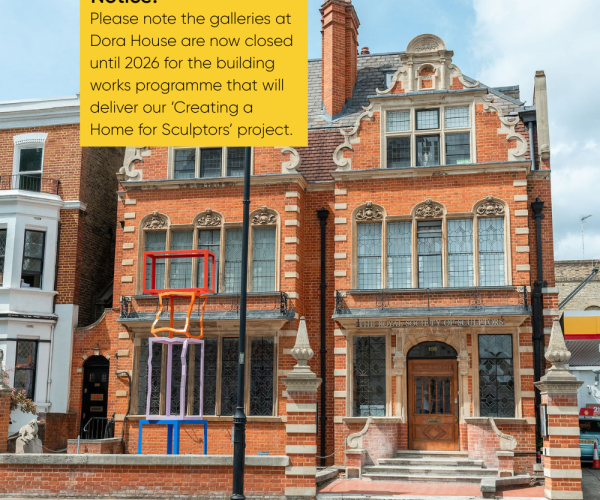11 to 5pm Monday to Saturday
Royal Society of Sculptors, 108 Old Brompton Road, London SW7 3RA
Free
Description
Due to popular demand we are keeping for a few more days the altar (ofrenda) that was created at Dora House as part of our half term activities inspired by the Dia de los Muertos (Day of the Dead) traditions.
To visit, simply pop in between now and Friday 15 November (11am to 5pm)
The Day of the Dead offering is part of a ritual intended to draw us closer to our deceased loved ones, allowing us to converse with their memory and life. The offering must include elements to guide the souls to find their way home.
The altar is the culmination of a week of workshops conceived and delivered by Tiz Creel, Founder and Director of Living Things Studio.
About the Artist
Tiz holds an undergraduate degree in Communications from Universidad Iberoamericana 2015 (Mexico City). In 2019, she completed an MFA in Fine Art at Goldsmiths University (London) as well as a residency at the School of Visual Arts in 2016 (New York). Tiz has collaborated with different institutions in the UK, exploring play as a method of participation and engagement. Recently, she collaborated with the Royal Kew Gardens to create a playful resource for experiencing nature from different perspectives. Find out more here.
About the Day of the Dead and the Altar
The ofrenda (altar) of the dead is a symbolic construction resulting from the syncretism of pre-Hispanic ideologies, the endemic worldview of Mesoamerican cultures, and European Abrahamic religious beliefs. The three levels of the offering represent the sky, the earth, and the underworld, symbolizing the intersection of the material and immaterial worlds or the earthly and the spiritual realms.
According to the legend, the Mictlán (place of the dead) is the place of eternal rest for the souls of those who have preceded us. The altar represents the seven steps that must be followed to reach Mictlán and meet the gods of the dead. The gods imposed a series of obstacles for the souls to pass through to earn a place in Mictlán and achieve eternal rest. After a journey of four years overcoming obstacles that test the strength of our spirit, the souls encounter the gates of Mictlán, where they are received by the lord of death, Mictlantecuhtli, and the goddess Mictecacihuatl.
Though activities associated with the Day of the Dead continue to evolve, the purpose behind the celebration remains constant: the holiday allows families to dedicate time each year to honor those who have passed away. Observing the Day of the Dead ensures that a beloved’s soul will never be forgotten, and therefore, truly never dies. Many participants believe that a person can experience three deaths. The first death is the expiration of the body. The second death occurs when the body is laid to rest. The third and final death happens only when the departed is forgotten.
Folk art reflects the everyman’s view of life—his own and the lives of those around him.
Elements of an ofrenda (altar)
The offerings typically allude to the four elements of nature. Water symbolizes purity. After their long journey, a glass of water is usually placed to quench the soul’s thirst. Fire is represented by the flame of the candles, illuminating the path for the dead to find their way back home. The Papel Picado, which moves with the slightest breeze, represents the element of air and wind. Finally, the earth is represented by various seeds, fruits, spices, and other natural bounties.
Tradition holds that it is through the orange colour of the Cempasúchil flowers that the souls of the departed find their way back to the world of the living. In ancient times, it was believed that the scent of this flower would attract the dead, so its petals were used to guide the souls to the altars.
An arch of flowers placed at the top of the last tier symbolizes the gateway to the world of the dead. Lastly, on the floor you can find the traditional tapetes (carpets or floor dressings). these are floor images made with seeds, flower petals, and sawdust to create patterns or representations on the ground.
Photographs of deceased loved ones honour the highest part of the altar. The picture is placed facing away, with a mirror in front of it so that the deceased can only see the reflection of their mourners, and the mourners, in turn, see only the reflection of the deceased. Food and drink aim to delight the dead who visit the offering, so their favourite dishes are always included. For adults, alcoholic beverages such as rum or tequila are common, reminding them of their joyful moments. Meanwhile, traditional sweets are offered to children.
For indigenous people, burnt copal (dry tree resin) was an element of prayer and praise to the gods, while incense was incorporated with the arrival of the Spanish and Catholicism. Both scents cleanse the space if any evil spirits are present.
Salt is the element of purification, preventing the body from corruption during its journey to and from the afterlife for the following year. Salt serves as a means of purifying the spirits and is an essential symbol in the offering.
On the other hand, Mesoamerican cultures took the skulls of sacrificed prisoners and lined them up to honour the gods; the altar was called tzompantli (which means "row of skulls" in Spanish). This is an essential part of pre-Hispanic rites and beliefs, which were forbidden with the arrival of the Spanish but underwent a process of assimilation. The real skulls were replaced by sugar skulls (sometimes chocolate), symbolizing death, which is ever-present. The craft of making sugar confections is known as alfeñique.
With thanks to Tiz Creel for this text about the Day of the Dead.





